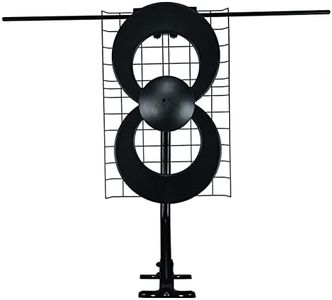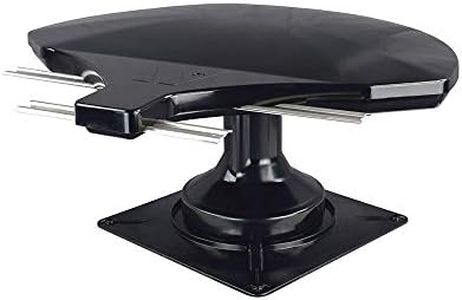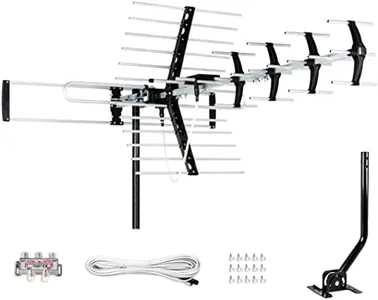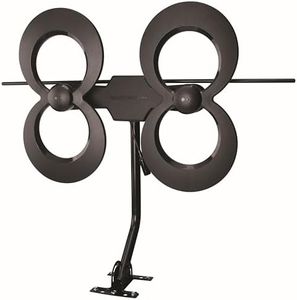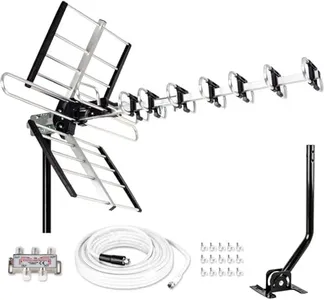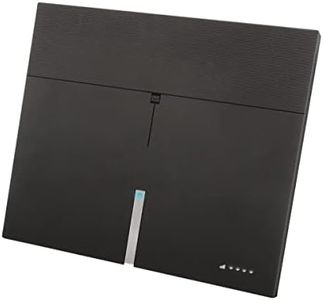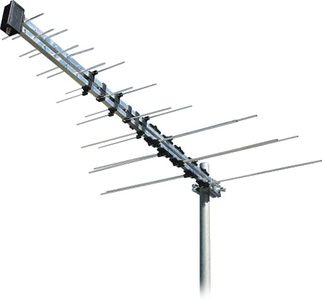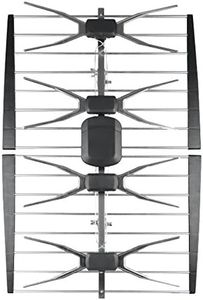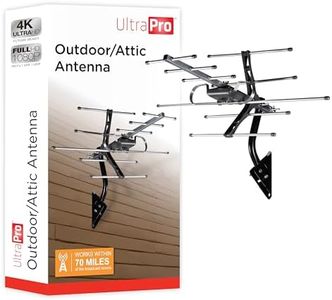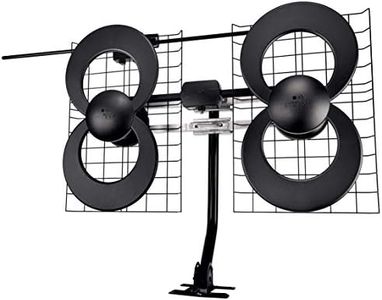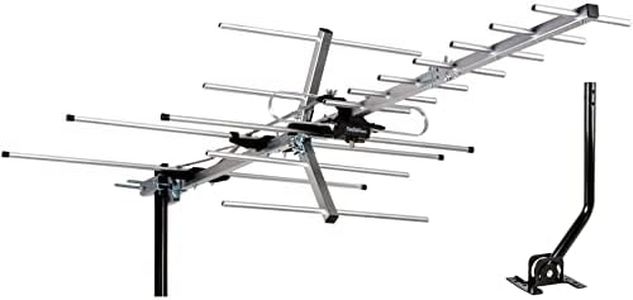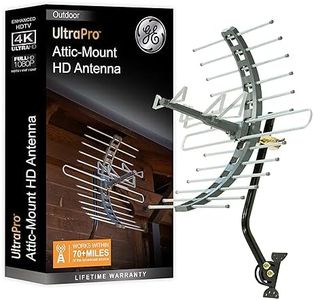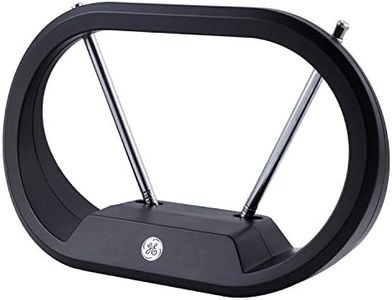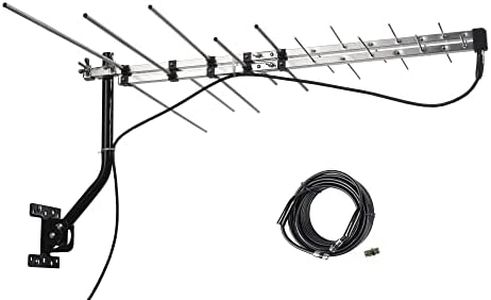We Use CookiesWe use cookies to enhance the security, performance,
functionality and for analytical and promotional activities. By continuing to browse this site you
are agreeing to our privacy policy
10 Best Attic Antennas
From leading brands and best sellers available on the web.Buying Guide for the Best Attic Antennas
Attic antennas can be a great way to receive over-the-air television signals without placing an antenna outdoors. They are installed inside your attic, which offers some protection from weather and can help preserve the look of your home's exterior. When buying an attic antenna, it’s important to understand your signal needs, your home's location relative to broadcast towers, and the limitations imposed by installing an antenna indoors. By focusing on the right combination of features and specifications, you can find an antenna that will give you a good balance between performance and ease of installation.Reception RangeReception range tells you the maximum distance from which an antenna can theoretically pick up TV signals. This is important because the farther you are from broadcast towers, the greater the range you’ll need. Manufacturer-stated ranges can be optimistic, especially if obstacles like hills or thick walls are present. Generally, antennas are labeled for short-range (up to 30 miles), mid-range (30-60 miles), and long-range (over 60 miles) use. If you live in a city near towers, a short-range antenna might suffice, while rural users may need a long-range model. Use online tools to check how far the nearest towers are before deciding. Choose a range that not only covers the distance but also accounts for attic placement, which can weaken signals slightly compared to outdoor setups.
Antenna Type (Directional vs Multidirectional)Antenna type refers to whether the antenna needs to be pointed in a specific direction (directional) or can receive signals from multiple directions (multidirectional). Directional antennas focus on signals from a particular direction, often offering stronger reception if you know exactly where the broadcast towers are relative to your home. Multidirectional antennas can pick up signals from all around but may have slightly weaker performance at long distances. For homes with towers clustered in one direction, a directional antenna is ideal. If towers are spread out or you’re unsure, a multidirectional antenna offers simplicity and flexibility.
Frequency Bands (UHF/VHF)TV signals come in two main frequency bands: UHF (Ultra-High Frequency) and VHF (Very High Frequency). Some antennas work better with one band than the other. It’s important because not all channels use the same band; some local stations might be on VHF, others on UHF. Antennas are often labeled as 'UHF-only,' 'VHF-only,' or 'UHF/VHF.' Check which channels are available in your area and on which bands, then select an antenna that supports both if you want to receive the full range of local channels.
Physical Size and ShapeThe size and shape of your attic antenna influence how well it receives signals and how easy it is to install in your attic. Larger antennas usually offer better signal reception, especially for VHF channels, but they may be tricky to fit if your attic space is limited. Smaller antennas are less obtrusive and easier to handle but might have reduced range or performance. Before buying, measure the available space in your attic to ensure the antenna will fit without interference from beams or insulation.
Installation RequirementsInstallation requirements cover how easy it is to set up the antenna, including how it mounts and the cabling it requires. Some attic antennas are lightweight and designed for simple mounting using brackets or hooks, while bigger antennas may need more stable, permanent mounting solutions. The attic’s conditions—like humidity, temperature, and accessibility—also matter. Always consider how comfortable you are with DIY tasks or whether you’ll need help installing the antenna safely in your attic.
AmplificationAmplified antennas feature a built-in signal booster to help pick up weaker signals, which can be especially helpful in areas far from broadcast towers or when attic materials weaken the signal. However, amplification doesn’t always solve all reception problems and, if strong signals are present, could cause picture distortion. If you have several strong local channels, a non-amplified antenna might work fine. For distant or weak signals, an amplified model might be worthwhile. Check the anticipated signal strength in your area to guide your choice.
